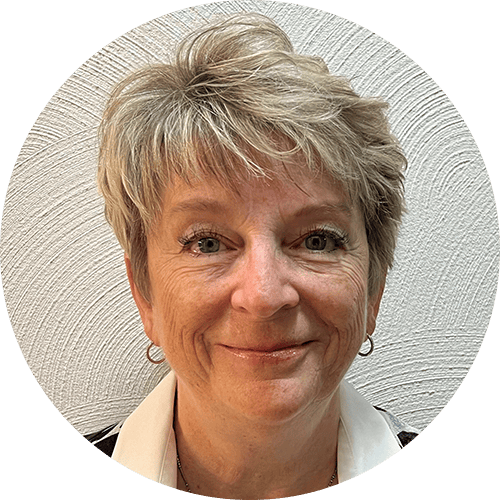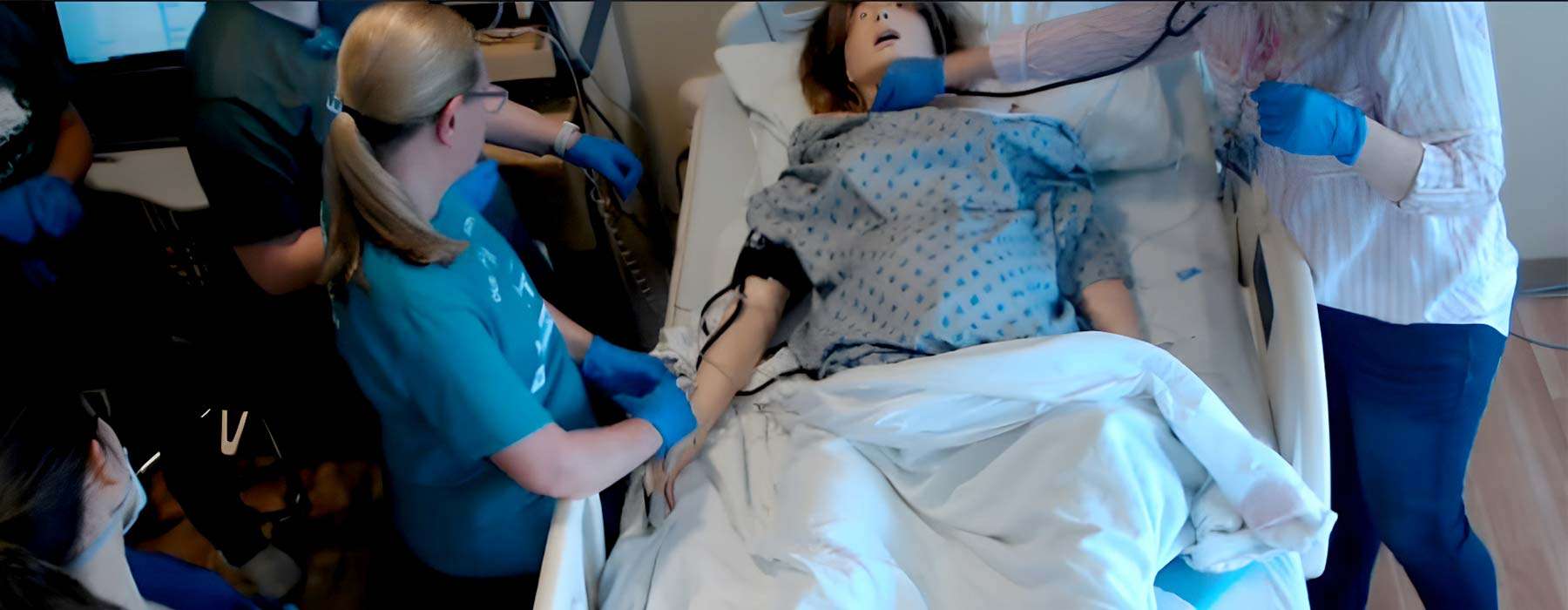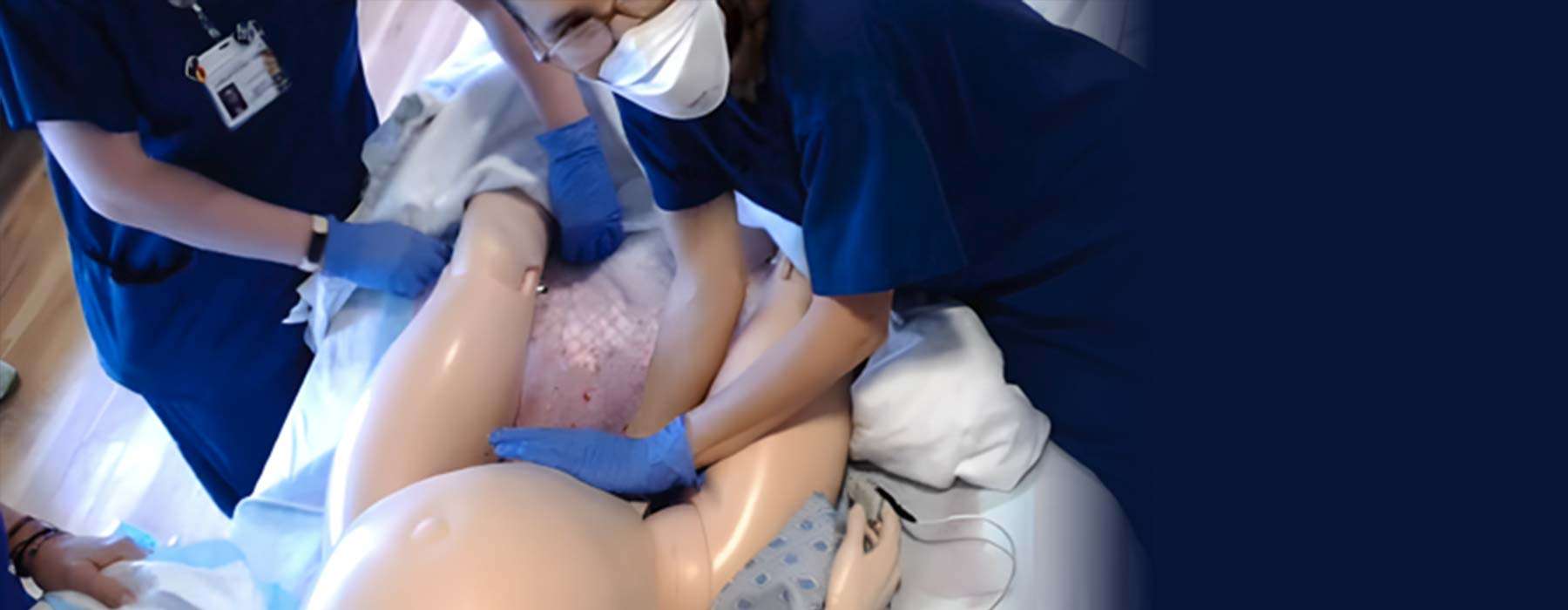Increasing Confidence in Crisis Management: Incorporating In Situ Simulation Training Into Team Training
Customer Story

Customer Story

Utilizing a partnership approach with Laerdal’s Accelerate program, Bronson Health is using simulation to build high-performance OB teams and improve patient safety.

Bronson Health is a 7-hospital system covering 9 counties in Michigan. They perform about 4,500 births each year between their 2 birthing hospitals: Bronson Methodist and Bronson Battle Creek.
- Carol A. Fuller, RN, BSN, MBA, C-EFM, CENP, C-ONSQ
System Director of Nursing for Women and Children’s Services at Bronson Methodist and Bronson Battle Creek Hospital

It was a typical Monday night in the emergency department of Bronson Methodist Hospital when a pregnant patient arrived via ambulance. She had preeclampsia with severe features, very high blood pressure, and vision loss. Shortly upon arrival to labor and delivery, she had a seizure while already on magnesium – an unexpected and unusual clinical presentation.
But the staff had simulated this exact scenario a week earlier, in labor and delivery. As a result, the clinical care team came together as a high-performance team to provide optimal care. The baby was delivered via C-section under general anesthesia, followed by a stat CT in radiology, and both mother and baby left the hospital a few days later with no lingering complications.
“Everyone maintained their composure and moved the entire process along as fast as possible,” shares Dr. Paul Berkowitz, one of the Bronson Health Hospitalists who cared for the patient. “Her care could not have been better once in our hands.”
Dr. Paul Berkowitz, Obstetrics and Gynecology, Bronson Health

Unfortunately, that’s not the way the story always ends. The United States continues to have the highest rate of maternal death of any high-income country.1 In fact, the number of maternal deaths in the United States has increased substantially in the last twenty-five years.2 A woman today is more than double as likely to die from childbirth than her mother.3
So, what did Bronson Health do differently to avoid this patient becoming another statistic?
“The crisis is the crisis. I can’t stop that from happening. But if we handle it well, we can change the outcome,” says Carol Fuller, RN, BSN, MBA, C-EFM, CENP, C-ONSQ, System Director of Nursing for Women and Children’s Services at Bronson Methodist and Bronson Battle Creek Hospitals.
Carol is committed to ensuring that every pregnant patient has a safe birth. With that goal in mind, she- began working with the Risk Management department and an outside consultant to perform risk assessments of all OB services as soon as she joined the Bronson Health system.
One of the identified risks was the limited time to practice emergency clinical procedures as a team and test current processes. While Bronson Methodist had a history of conducting simulations for residents, translating that practice opportunity to the hospital floor was lacking.
The challenge
Carol knew the potential value of in situ simulation – or simulation that takes place in the real environment – in helping her team address the issues identified in the risk assessment.
"Making someone go find that blood warmer in the middle of chaos is totally different than just being in a sim lab, where all the equipment is sitting there in a corner and you just reach over and grab what you need," she explains. "It’s about using your real resources…and actually having to tube the blood, call the blood bank, get your meds out of the Pyxis and bring in your own hemorrhage cart from wherever it got pushed the last time," she adds. "It’s that stuff that you can’t simulate in a lab."
The challenge was that, as a smaller local community hospital, Bronson Battle Creek lacked the educational resources needed to conduct the in-situ simulations that Carol wanted. As Carol and the larger Bronson Health patient safety team began to explore options to address the identified issues, Carol was introduced to Laerdal and the Accelerate program.
The solution

As part of the turnkey Accelerate program, Laerdal would complement the current education and quality improvement processes as a patient safety partner. Specifically, Laerdal would come on-site, provide and install all necessary equipment, scenarios, operators, and adjunct educators to allow the Bronson Health team to focus on a variety of obstetric scenarios at the bedside.
Moreover, through the utilization of various data sources – including a SimCapture visual debriefing system – the Bronson Health team could benchmark their current activities and objectively identify areas of opportunity. For example, the eclampsia simulation scenario would capture and organize data on key actions and the response time associated with each – such as:
including requesting anesthesia assistance and suction apparatus
including administration of antihypertensive and magnesium sulfate
including correctly ordering and administering antihypertensive and magnesium sulfate bolus
including assessing patient orientation and checking external fetal monitor
The results

After a series of planning calls to ensure relevant Bronson Health policies and protocols were incorporated into the Accelerate training, Laerdal visited Battle Creek and ran through postpartum hemorrhage and eclampsia simulation scenarios. As part of the experience, Carol believed it was important to run each of the simulation scenarios twice.
Conducting each drill twice was beneficial for the providers. “Some of the things like communicating better, reading back on medication … in the second scenario, the team was much more in tune to that,” she says. “Because they’ve had some opportunity to talk through the deficit.”
When addressing the perception that in situ experiences can be anxiety-inducing for some staff, Carol explained that it’s truly about how the education is framed. “It’s about fixing some of that and helping people understand that this is a chaotic situation,” she explains. “There are certain things you can do to make it less chaotic, and there are certain things you can do that make it more at risk.”
The feedback from the team confirmed Carol’s confidence in the approach. Not only the nursing staff but also the physicians appreciated the opportunity to practice, learn, and evolve.
- Carol A. Fuller, RN, BSN, MBA, C-EFM, CENP, C-ONSQ
System Director of Nursing for Women and Children’s Services at Bronson Methodist and Bronson Battle Creek Hospital

But the experience did not end there. A few weeks later, Carol and the leadership team had the opportunity to review the data collected during the Accelerate experience. Not only did it provide insight into a few key areas of opportunity, but it also highlighted areas of success for the team to be congratulated and encouraged to keep driving.
“The providers really like the data because they’re very data driven," she says. "It also gave us opportunities to look at where we need to focus some other education."

After the success at Battle Creek, Carol knew she wanted to bring Laerdal in for more Accelerate sessions at the larger hospital, Bronson Methodist. Luckily, she’d invited the hospital’s senior leaders to observe the simulations at Battle Creek. Once the leaders saw the value first-hand, it wasn’t difficult for Carol to obtain the budget for additional Accelerate sessions for both locations, which took place in 2024.
The organizational forethought and commitment to proactive patient safety paid dividends on that Monday night shortly thereafter.
Carol was amazed at the uncanny timing. "Even though we’re a regional center, we really don’t see patients who seize while already on magnesium," she explains. "To have a patient get that deep into a preeclampsia episode where they actually seize and have to go for a C-section under general [anesthesia], and then go to CT – that is a very complicated patient."
"In the simulation, they went through this same scenario with this patient in the same situation. Then they ended up doing a second round with the real patient. It really helped them feel comfortable to get through all those steps."
That difference is why the organization has committed to partner with Laerdal in patient safety long-term.
"That’s where the cost-benefit really comes into play – because there is no amount of money that I could put on whether or not this [patient] survived this, whether or not the baby survived it," she says. "And they both did, and they both went home, and they are both doing well. You can’t put a dollar amount on that. But every one of us in the OB world would say, 'Whatever amount of money we spent to make that happen would be good money spent.'"